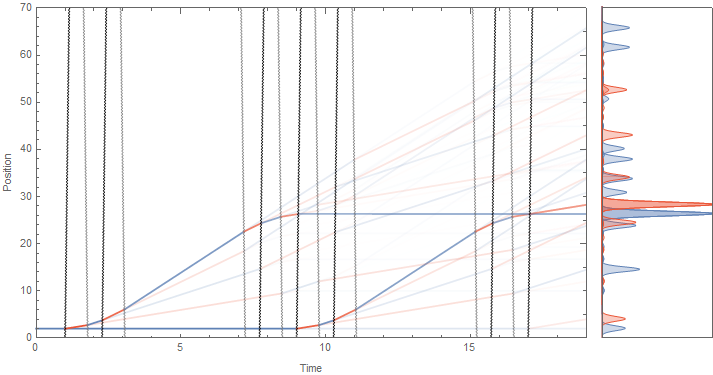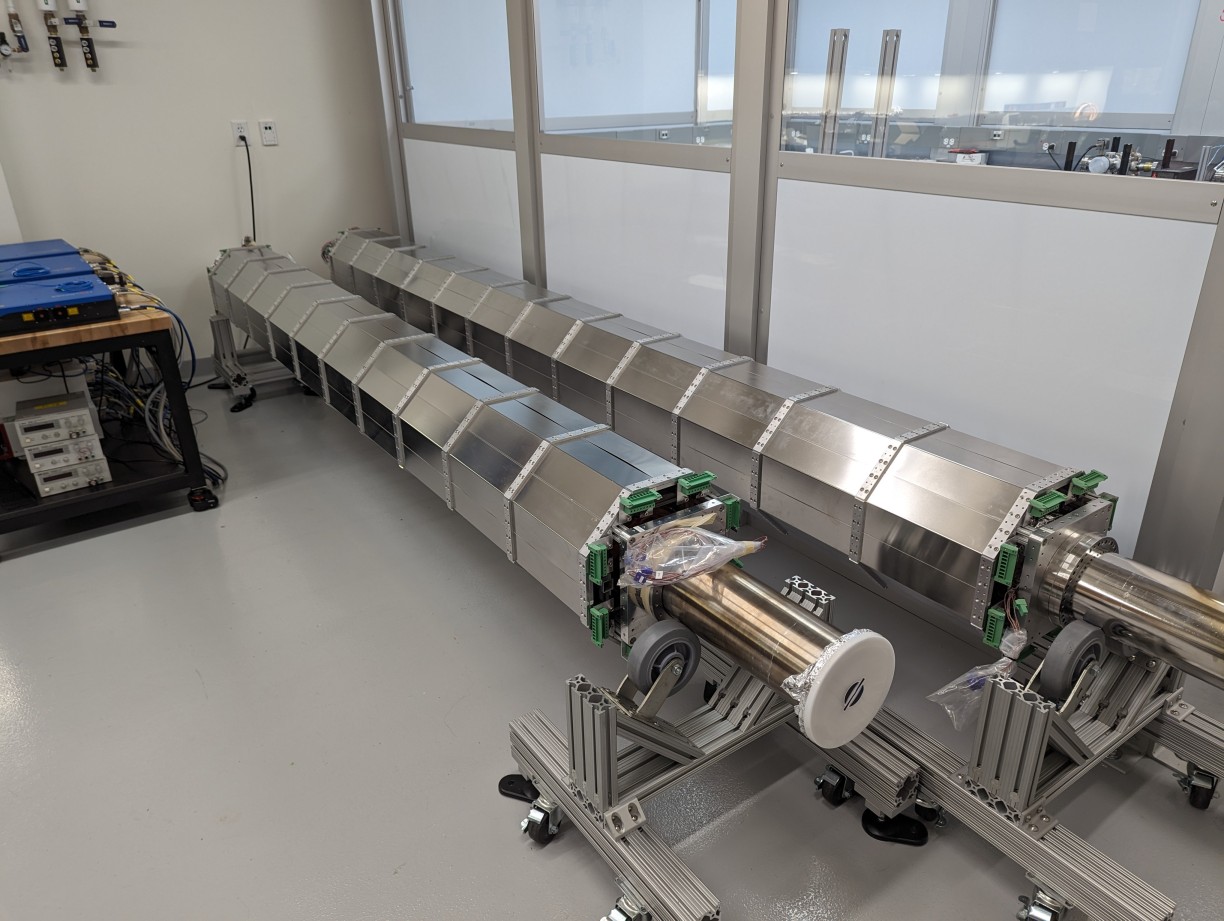Theoretical projects
Parasitic interferometers
For a clock atom interferometer, the infidelity of a π-pulse causes state transition error. While most of the wavepacket is flipped to a different internal state with an additional photon recoil, a small fraction of the wavepacket is left behind with the same internal and momentum state. This branching out of momentum happens at every pulse, generating a binary tree in spacetime. In total, after N π-pulses, there will be up to O(2N) paths traversing the tree (fewer if the pulses have strong velocity selectivity), among which only the two main interferometer paths carry the appropriate phase and are of interest.
However, it is possible for the other paths, referred to as the parasitic paths, to terminate in the vicinity of the main paths. In particular, those with the same final momentum will interfere with the main paths even after any time of flight, leading to population counting error at the output ports. In this project, I develop a mathematical formalism to describe and identify these parasitic paths, and put an upper bound on the population counting error.

